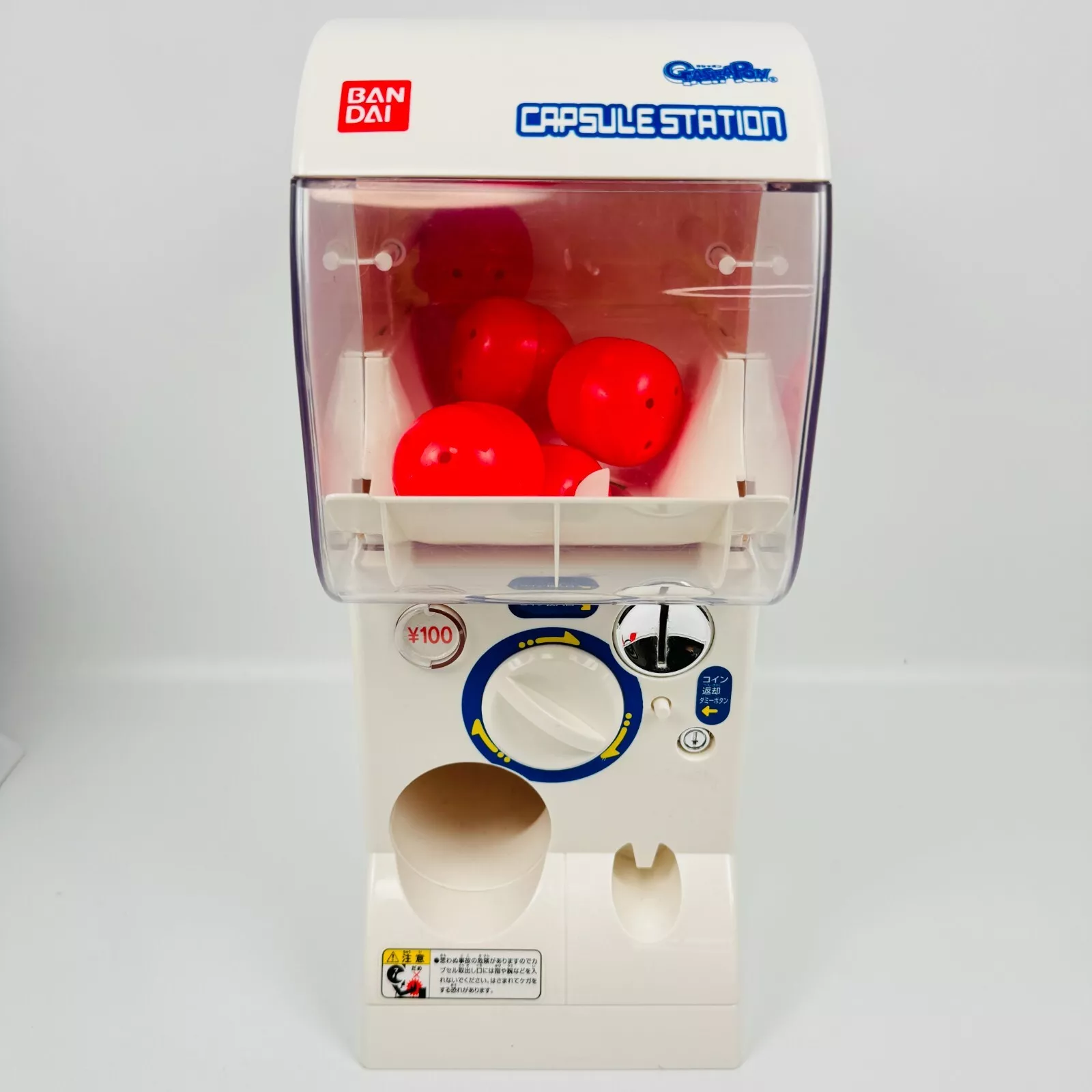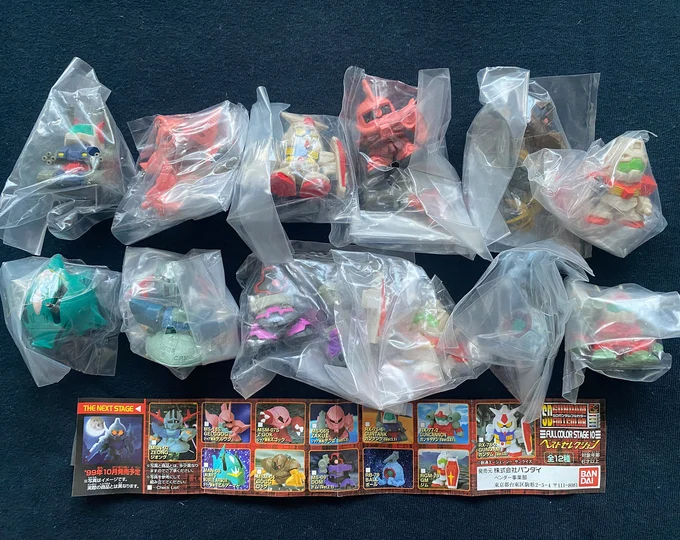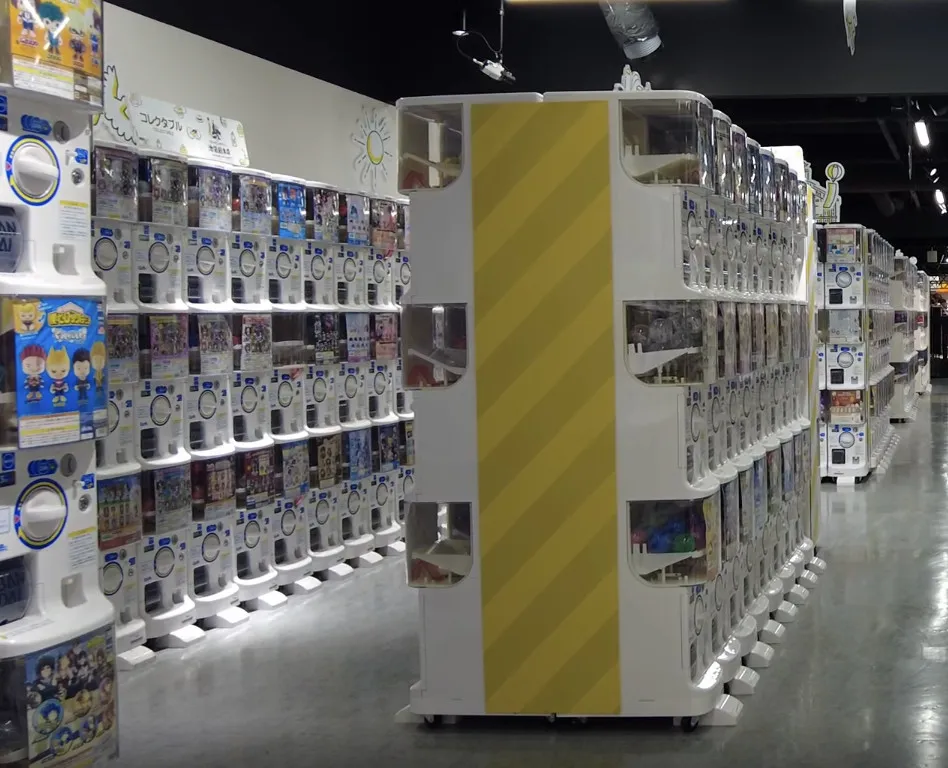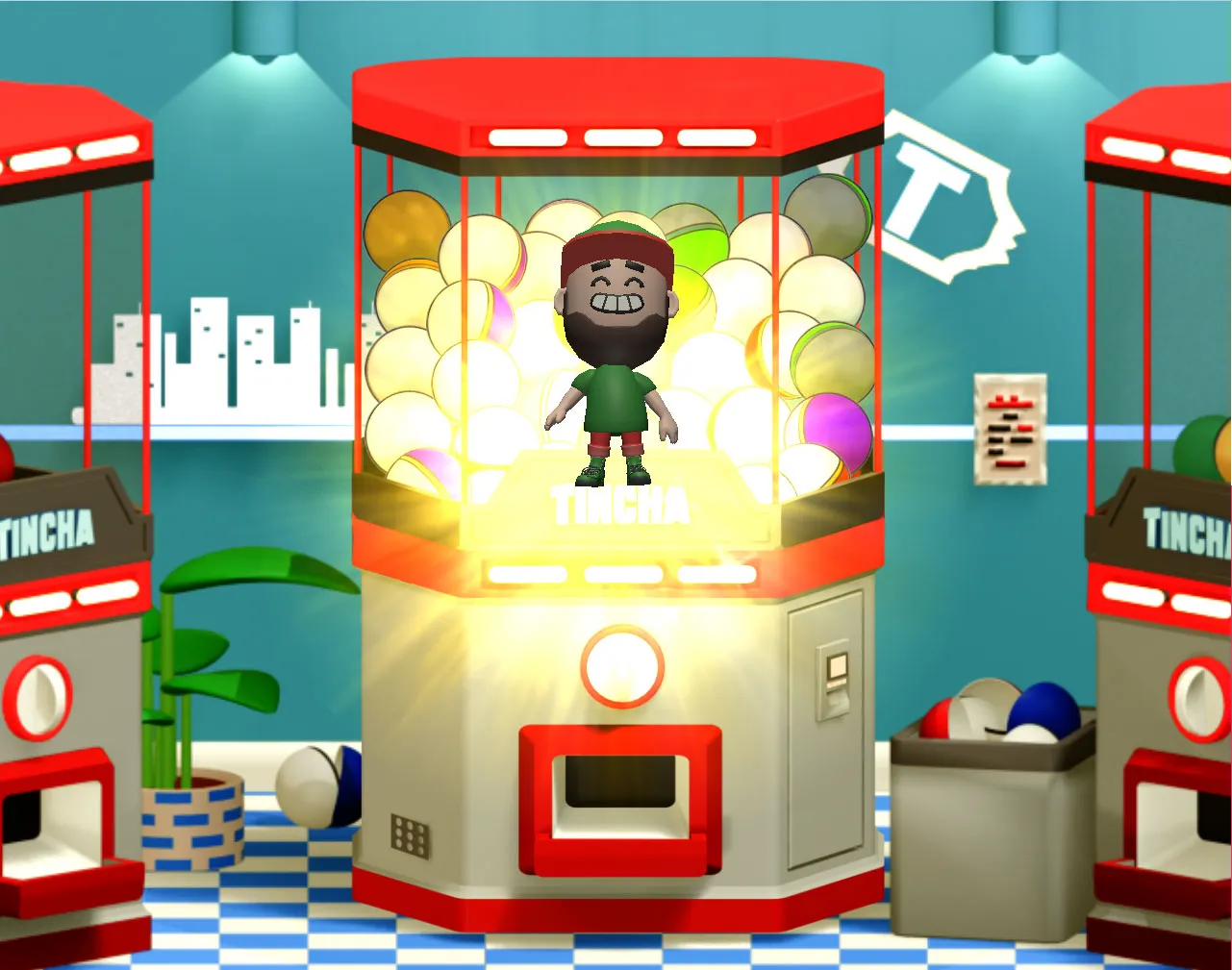Gachapon Machines: History and Video Games
The Origins: From Gumball Machines to a Japanese Innovation (1960s – 1970s)
 An early Gashapon machine - note the hand‐crank mechanism and ¥100 price.
An early Gashapon machine - note the hand‐crank mechanism and ¥100 price.
The idea of dispensing small toys from vending machines began in the United States with gumball machines. Yet the modern Gashapon is unmistakably Japanese. In 1965, Ryuzo Shigeta - often called the “Grandfather of Gachapon” - installed Japan’s first machine. His breakthrough was to seal each toy in a transparent plastic capsule, delivering a cleaner and more enticing presentation than loose‐bulk vending.
A watershed moment arrived in 1977 when Bandai entered the market and trademarked the word “Gashapon.” By partnering with wildly popular franchises such as Kamen Rider and Ultraman, Bandai elevated capsule toys from 10‐yen trinkets to coveted collectibles sold at ¥100 per spin. Despite the higher price, fans flocked to the machines, establishing Gashapon as a serious collectibles format.
The Golden Era: Booms and Diversification (1980s – 1990s)
 SD Gundam Gashapon figures - detailed, colorful, and designed for display.
SD Gundam Gashapon figures - detailed, colorful, and designed for display.
The 1980s ushered in the first true “golden age.” Bandai’s Kinnikuman Erasers (1983) sold more than 180 million units and proved the power of manga/anime tie‐ins. The second boom arrived in the mid‐1990s with full‐color, highly detailed figures - most famously the SD Gundam line - capturing an adult collector audience. Manufacturers slimmed down the machines for easier placement, and capsules shifted to recyclable polypropylene, reflecting rising environmental awareness.
Gashapon in the 21st Century: From Everyday Items to Global Phenomenon
 A wall of capsule machines at Akihabara’s famed Gachapon Kaikan.
A wall of capsule machines at Akihabara’s famed Gachapon Kaikan.
In the 21st century, Gachapon prizes have expanded far beyond anime figurines. Machines now offer everything from miniature office furniture and traffic lights to phone accessories, stationery, pet outfits and hyper‐realistic food replicas. Specialty stores like Gachapon Kaikan in Akihabara house hundreds of machines and have become pilgrimage sites for domestic and international fans alike. Outside Japan, interest is spreading across Asia, North America and Europe. Modern units increasingly support cashless payments, and quirky lines such as Koppu no Fuchiko (“Fuchiko on the Cup”) show that imagination still drives the market.
Key Milestones in Gashapon History
| Year | Event | Significance |
|---|---|---|
| 1965 | First machine installed by Ryuzo Shigeta | Birth of Gashapon in Japan |
| 1977 | Bandai enters and trademarks “Gashapon” | Licensed characters + higher price spark massive popularity |
| 1983 | Kinnikuman Erasers boom | 180 M units sold; proves power of manga tie‐ins |
| Mid‐1990s | SD Gundam full‐color figures | Attracts adult collectors; market broadens |
| 2000s‐present | Diversified prizes & specialty stores | Transition from toys to lifestyle items; global expansion |
Gashapon Goes Digital: Finding the Capsule Toy Experience in Video Games
 Spinning for collectibles in Shenmue (1999).
Spinning for collectibles in Shenmue (1999).
While the term “gacha” often refers to monetization in mobile titles, several games incorporate physical Gachapon machines or capsule‐style randomness purely for thematic or collectible purposes.
- Shenmue (1999) - Protagonist Ryo can spend in‐game yen on Sega‐themed capsule toys, enhancing the game’s lived‐in recreation of Japanese streets.
- Yo‐Kai Watch (2013) - The Crank‐a‐kai is the core system for recruiting new Yo‐kai by inserting coins found during gameplay.
- Kirby and the Forgotten Land (2022) - Players collect charming figurines of characters and enemies via Gachapon machines scattered across stages.
- SNK vs Capcom: Card Fighter Clash (1999) - A “claw machine” mechanic grants random cards, echoing Gachapon suspense.
- Xenoblade Chronicles 2 (2017) - Its Core Crystal summoning mirrors capsule luck, doling out Blades of varying rarity.
- Numerous other Japan‐inspired titles feature machines as décor or interactive set‐pieces, underscoring their cultural ubiquity.
Conclusion: The Enduring Magic of the Gachapon
From humble capsule dispensers to icons of pop culture, Gachapon machines captivate through a timeless blend of surprise, collectibility, affordability and franchise synergy. Whether lining Tokyo arcades, hiding in suburban convenience stores or appearing inside virtual worlds, the twist of a crank continues to deliver a spark of joy.
Fresh Innovation: How Tincha Marries Gachapon with a Cozy City Builder
 Spinning a capsule machine in Tincha to unlock new blueprints.
Spinning a capsule machine in Tincha to unlock new blueprints.
Tincha re‐imagines the capsule‐toy thrill by merging it with a relaxing cozy city‐builder:
- Gachapon machines produce buildings, decorations and unique villagers that you can freely place around your island town.
- The randomness keeps the excitement of traditional capsules, while gentle city‐building mechanics nurture creativity and calm.
- Seasonal events and artist collaborations introduce new capsule series, encouraging collection and thematic town design.
- No aggressive micro‐transactions: players earn capsules through play or trade with friends, prioritizing a wholesome experience over pay‐to‐win.
Tincha proves that the Gachapon concept is still ripe for reinvention - combining the delight of collecting with the satisfaction of building your own little world.
🔗 Keep Exploring
👉 Discover 10 Cozy Indie City-Building Games You’ll Love
👉 Learn About Online Gachapon and Claw Machine Platforms
👉 Master Claw Machine Types & Winning Strategies
